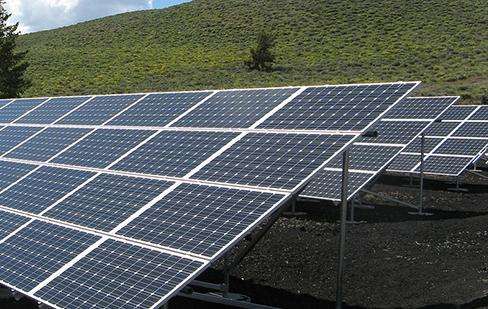Yes, as long as the quantum efficiency is not zero in this wavelength range. However, the band gap of silicon is about 1.12 eV, so it is necessary to ensure that the light is less than 1100 nm, and because the upper transparent electrode can absorb light, it must generally be greater than 350 nm. Therefore, ultraviolet light is more difficult to apply, but near-infrared light is possible.
You can refer to any solar cell book to know the principle of power generation. In simple terms, they absorb photons, generate electron-hole pairs and separate under the action of the built-in electric field to form. current.
Solar photovoltaic power generation: is a method of power generation that directly converts solar energy into electrical energy. It includes four forms: photovo energy productionltaic, photochemical energy production, light induction energy production and photobiological energy production.
Photovoltaic energy generation: When an object is exposed to light, the state of charge distribution in the object changes by generating an electromotive force and current. Since the conversion efficiency of monocrystalline silicon is now higher than that of polycrystalline silicon, but the production cost of polycrystalline silicon panels is lower, many polycrystalline silicon panels are now used to generate electricity.
Among them, photochemical power generation includes: electrochemical photovoltaic cells, photoelectrolysis cells and photocatalytic cells. ② Solar thermal power generation - it first converts solar energy into thermal energy, and then converts thermal energy into electrical energy. Shehas two conversion methods: one is to directly convert solar thermal energy into electrical energy. Another way is to use solar thermal energy to drive a generator to produce electricity via a heat engine.
There are two methods of solar power generation: one is the light-heat-electricity conversion method and the other is the direct light-electricity conversion method. (1) The light-heat-electricity conversion method generates electricity using thermal energy generated by solar radiation. Generally, a solar collector converts the absorbed thermal energy into steam as the working fluid and then drives a steam turbine to produce electricity. The first process is a light-heat conversion process; the second process is a heat-electricity conversion process, which is the same as thermal power generationordinary. The disadvantages of solar thermal power generation are that its efficiency is very low and its cost is high. Its investment is estimated to be at least higher than that of ordinary thermal power generation. Power plants are 5-10 times more expensive.
Current methods of generating electricity include: solar power generation, hydroelectric power generation. , thermal power generation, nuclear power plants, wind power generation, geothermal power generation, tidal power generation, etc. I hope my answer can be useful to you.














